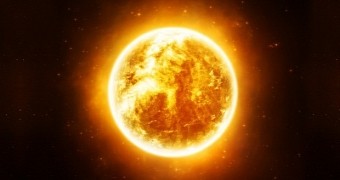Just like solid, liquid and gas, which we are all familiar with, plasma is a fundamental state of matter. It comprises ions, which are basically atoms or molecules that contain either fewer or more electrons than protons, and free-moving electrons.
Although discovered only a few decades ago, plasma is quite a common sight in this universe of ours. It's present not only in interstellar space but also included in the makeup of stars like our Sun.
Writing in the journal Physical Review Letters, scientists argue that, because they pack massive amounts of plasma, it might be that stars can produce sounds. Yes, sounds, as in vibrations like the ones we use to communicate with one another.
While experimenting with this fourth state of matter in laboratory conditions, researchers found that, if struck by an ultra-intense laser, a plasma target can produce a more or less orderly series of pressure pulses, i.e. a sound wave.
This lab-made sound wave had a frequency of almost a trillion hertz, which specialists say is about six million times higher than any mammal, humans included, could ever hope to hear using just their ears.
Since stars contain plasma, it's safe to assume that, given the right circumstances, they too can produce pressure pulses similar to the ones obtained in the laboratory, scientists argue.
“When they are accumulating new material stars could generate sound in a very similar manner to that which we observed in the laboratory,” University of York researcher John Paskey explained in an interview, as cited by the Alpha Galileo Foundation.
If stars do, in fact, generate sounds, as suggested by this investigation, there is one very simple explanation for why we can't hear anything: sound cannot move through the vacuum of space.

 14 DAY TRIAL //
14 DAY TRIAL //